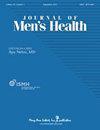An Investigation of the Sex Differences in Terms of Internal and External Loads in Orienteering Activities
IF 0.6
4区 医学
Q4 Medicine
引用次数: 0
Abstract
Background : Orienteering has been growing in popularity and is considered to meet several of the needs of adolescents. Factors such as the type of terrain and the technical difficulty of the course affect the load in orienteering. In order to plan sports training regimes and recreational activities, it is crucial to know about the internal and external loads of the actions. Therefore, the purpose of this study is to investigate the sex differences in internal loads (heart rate) and external loads (distance covered at specific speeds) of the activities in orienteering. Methods : This study included 9 women with a mean age of 16.00 ± 0.83 years and 11 men with a mean age of 15.91 ± 1.22 years, who were all enrolled in a high school and who participated in school orienteering as a sports activity. The volunteer adolescents participated in the orienteering activity on a large, campus-like terrain that had a topographic map. The orienteering-specific goals were placed in this course at certain distances between them. Team Pro Polar was utilized to determine the participants’ internal and external loads. The ‘Mann-Whitney U’ test was utilized for the comparison of the data obtained from the participants in terms of their sexes. Results : The orienteering activity was found to cause a high-level internal load in adolescents, but no statistically significant differences were found between the sexes ( p > 0.05). Female course runners were found to cover distance mostly by walking and low-speed running. Men were found to cover longer distances than the women in moderate, high and maximum-speed running. Conclusions : The findings of this study show that orienteering is a physically challenging activity for both male and female adolescents. While the sexes were similar in terms of internal load, men were found to be exposed to a higher load in terms of their external load.定向运动内外负荷性别差异的调查研究
背景:定向运动越来越受欢迎,被认为可以满足青少年的一些需求。地形类型和课程的技术难度等因素会影响定向运动的负荷。为了计划体育训练制度和娱乐活动,了解动作的内部和外部负荷至关重要。因此,本研究的目的是调查定向运动活动的内部负荷(心率)和外部负荷(特定速度下的距离)的性别差异。方法:本研究包括9名平均年龄16.00±0.83岁的女性和11名平均年龄15.91±1.22岁的男性,她们都就读于一所高中,并参加了学校定向运动。志愿者青少年在一个有地形图的大型校园地形上参加了定向运动。定向运动的特定目标被放置在这个课程中,它们之间有一定的距离。使用Team Pro Polar来确定参与者的内部和外部负荷。“Mann-Whitney U”测试用于比较从参与者那里获得的性别数据。结果:定向运动在青少年中引起高水平的内部负荷,但性别之间没有统计学上的显著差异(p>0.05)。女性长跑运动员主要通过步行和低速跑来完成距离。研究发现,在中等、高速和最高速度的跑步中,男性比女性跑得更远。结论:这项研究的结果表明,定向运动对男性和女性青少年来说都是一项具有身体挑战性的活动。虽然性别在内部负荷方面相似,但男性在外部负荷方面暴露于更高的负荷。
本文章由计算机程序翻译,如有差异,请以英文原文为准。
求助全文
约1分钟内获得全文
求助全文
来源期刊

Journal of Men's Health
Medicine-Urology
CiteScore
0.70
自引率
28.60%
发文量
153
审稿时长
10 weeks
期刊介绍:
JOMH is an international, peer-reviewed, open access journal. JOMH publishes cutting-edge advances in a wide range of diseases and conditions, including diagnostic procedures, therapeutic management strategies, and innovative clinical research in gender-based biology. It also addresses sexual disparities in health, life expectancy, lifestyle and behaviors and so on. Scientists are encouraged to publish their experimental, theoretical, and descriptive studies and observations in as much detail as possible.
 求助内容:
求助内容: 应助结果提醒方式:
应助结果提醒方式:


